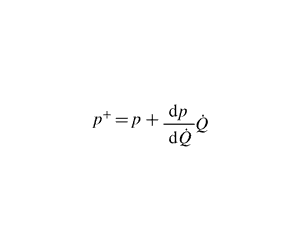Crossref Citations
This article has been cited by the following publications. This list is generated based on data provided by
Crossref.
Juniper, Matthew P.
2020.
Erratum: Sensitivity analysis of thermoacoustic instability with adjoint Helmholtz solvers [Phys. Rev. Fluids
3
, 110509 (2018)].
Physical Review Fluids,
Vol. 5,
Issue. 7,
Huhn, Francisco
and
Magri, Luca
2020.
Optimisation of chaotically perturbed acoustic limit cycles.
Nonlinear Dynamics,
Vol. 100,
Issue. 2,
p.
1641.
Agostinelli, P.W.
Laera, D.
Boxx, I.
Gicquel, L.
and
Poinsot, T.
2021.
Impact of wall heat transfer in Large Eddy Simulation of flame dynamics in a swirled combustion chamber.
Combustion and Flame,
Vol. 234,
Issue. ,
p.
111728.
Schiavo, E. Lo
Laera, D.
Riber, E.
Gicquel, L.
and
Poinsot, T.
2021.
On the impact of fuel injection angle in Euler–Lagrange large eddy simulations of swirling spray flames exhibiting thermoacoustic instabilities.
Combustion and Flame,
Vol. 227,
Issue. ,
p.
359.
Li, Weixuan
Zhao, Dan
Chen, Xiong
Sun, Yuze
Ni, Siliang
Guan, Di
and
Wang, Bing
2021.
Numerical investigations on solid-fueled ramjet inlet thermodynamic properties effects on generating self-sustained combustion instability.
Aerospace Science and Technology,
Vol. 119,
Issue. ,
p.
107097.
Zhao, Dan
2022.
Thermodynamics-Acoustics Coupling Studies on Self-Excited Combustion Oscillations Maximum Growth Rate.
Journal of Thermal Science,
Vol. 31,
Issue. 5,
p.
1591.
Guan, Yu
Moon, Kihun
Kim, Kyu Tae
and
Li, Larry K.B.
2022.
Synchronization and chimeras in a network of four ring-coupled thermoacoustic oscillators.
Journal of Fluid Mechanics,
Vol. 938,
Issue. ,
Jain, Animesh
and
Magri, Luca
2022.
A physical model for indirect noise in non-isentropic nozzles: transfer functions and stability.
Journal of Fluid Mechanics,
Vol. 935,
Issue. ,
Agostinelli, P.W.
Laera, D.
Chterev, I.
Boxx, I.
Gicquel, L.
and
Poinsot, T.
2022.
On the impact of H2-enrichment on flame structure and combustion dynamics of a lean partially-premixed turbulent swirling flame.
Combustion and Flame,
Vol. 241,
Issue. ,
p.
112120.
Liu, Xuanqi
Zhou, Hangxu
Lai, Yufeng
and
Zhang, Yang
2023.
Equivalence ratio independence and dependence ranges of system responses for a nonlinear thermoacoustic oscillation in a Rijke tube.
Journal of Sound and Vibration,
Vol. 547,
Issue. ,
p.
117545.
Schuermans, Bruno
Moeck, Jonas
Blondé, Audrey
Dharmaputra, Bayu
and
Noiray, Nicolas
2023.
The Rayleigh integral is always positive in steadily operated combustors.
Proceedings of the Combustion Institute,
Vol. 39,
Issue. 4,
p.
4661.
Kumar, Ankit D.
Massey, James C.
Stöhr, Michael
Meier, Wolfgang
and
Swaminathan, Nedunchezhian
2023.
Period-2 Thermoacoustics in a Swirl-Stabilised Partially Premixed Flame Computed Using Large Eddy Simulation.
Flow, Turbulence and Combustion,
Vol. 111,
Issue. 3,
p.
995.
Anani, Kwassi
Prud’homme, Roger
and
Hounkonnou, Mahouton N.
2023.
An approximate analytical model for the frequency response of evaporating droplets under a mixed feeding regime.
Comptes Rendus. Mécanique,
Vol. 351,
Issue. S2,
p.
77.
Deshmukh, Nilaj N.
Sharma, S. D.
and
Ansari, Afzal
2023.
Experimental method for temperature measurement on lateral planes along a Rijke tube to assess efficacy of control method.
MethodsX,
Vol. 10,
Issue. ,
p.
102170.
Deshmukh, Nilaj
Ansari, Afzal
Kumar, Praseed
George, Allen Varghese
Thomas, Febin Joseph
and
George, Merick Steve
2023.
Development of closed-loop active control method for suppression of thermoacoustic instability using radial air micro-jets.
MethodsX,
Vol. 10,
Issue. ,
p.
102123.
Ceglie, Vito
Stefanizzi, Michele
Capurso, Tommaso
Fornarelli, Francesco
and
Camporeale, Sergio M.
2023.
Thermoacoustic Combustion Stability Analysis of a Bluff Body-Stabilized Burner Fueled by Methane–Air and Hydrogen–Air Mixtures.
Energies,
Vol. 16,
Issue. 7,
p.
3272.
Guan, Yu
Yin, Bo
Yang, Zhijian
and
Li, Larry K.B.
2024.
Forced synchronization of self-excited chaotic thermoacoustic oscillations.
Journal of Fluid Mechanics,
Vol. 982,
Issue. ,
Liu, Xuanqi
Lai, Yufeng
Fisk, Callum
Willmott, Jon
Zhou, Huaichun
and
Zhang, Yang
2024.
Experimental investigation on the effects of a mesh in the downstream region of a combustion-driven Rijke tube on self-excited thermoacoustic oscillations.
Experimental Thermal and Fluid Science,
Vol. 150,
Issue. ,
p.
111061.
Zhao, Xinyu
Zhao, Dan
Shelton, Cody M.
Wang, Bing
Dong, Xu
Li, Junwei
and
Huang, Yue
2024.
Outlet boundary condition and mean temperature gradient effects on the minimum acoustics disturbances energy in triggering nonlinear thermoacoustic instability.
Physics of Fluids,
Vol. 36,
Issue. 3,
Son, Hwijae
and
Lee, Minwoo
2024.
A PINN approach for identifying governing parameters of noisy thermoacoustic systems.
Journal of Fluid Mechanics,
Vol. 984,
Issue. ,
